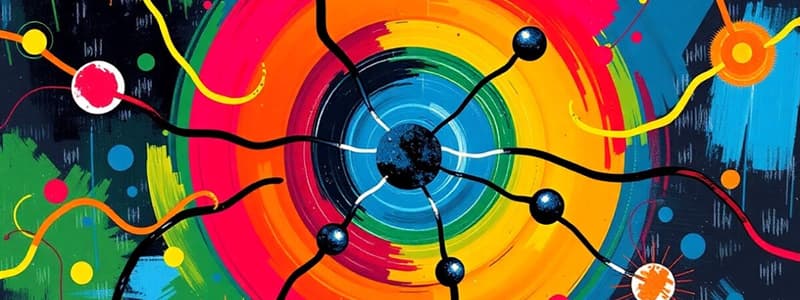Podcast
Questions and Answers
What is required for electricity to be generated?
What is required for electricity to be generated?
- A moving stream of electrons (correct)
- Low resistance materials only
- An infinite power source
- A closed circuit only
Which material is categorized as a conductor?
Which material is categorized as a conductor?
- Plastic
- Glass
- Rubber
- Copper (correct)
What defines a closed circuit?
What defines a closed circuit?
- It requires three or more power sources
- Electrons can flow with a break in the circle
- Any two terminals of a battery attached
- It creates a circular path with no interruptions (correct)
What happens in an open circuit?
What happens in an open circuit?
What does a switch do in a circuit?
What does a switch do in a circuit?
Which part of the battery is positive?
Which part of the battery is positive?
Why is it important to use both terminals of a battery in a circuit?
Why is it important to use both terminals of a battery in a circuit?
What type of materials are classified as insulators?
What type of materials are classified as insulators?
What component is necessary to construct an electrical circuit?
What component is necessary to construct an electrical circuit?
Which of the following statements about circuits is incorrect?
Which of the following statements about circuits is incorrect?
Flashcards
What is an electron?
What is an electron?
A tiny charged part of an atom.
What is a conductor?
What is a conductor?
Materials that allow the flow of electrons. Examples include copper, aluminum, gold, and silver.
What is an insulator?
What is an insulator?
Materials that resist the flow of electrons. Examples include rubber, wood, air, plastic, and glass.
What is a closed circuit?
What is a closed circuit?
Signup and view all the flashcards
What is an open circuit?
What is an open circuit?
Signup and view all the flashcards
What is a power source?
What is a power source?
Signup and view all the flashcards
What is a conductor in a circuit?
What is a conductor in a circuit?
Signup and view all the flashcards
What is an electrical appliance in a circuit?
What is an electrical appliance in a circuit?
Signup and view all the flashcards
What is a switch?
What is a switch?
Signup and view all the flashcards
What is a short circuit?
What is a short circuit?
Signup and view all the flashcards
Study Notes
Electrons and Electricity
- Electrons are tiny, charged parts of atoms.
- The word "electron" comes from "electric" and "ion".
- Electricity is created when a stream of electrons moves through a conductor.
Conductors and Insulators
- Conductors allow electrons to flow easily.
- Common conductors include copper, aluminum, gold, and silver wires.
- Insulators do not allow electricity to flow easily.
- Common insulators include rubber, wood, air, plastic, and glass.
Electrical Circuits
- Circuits involve the circular flow of electrons.
- The Latin word "circuitus" signifies "circular motion".
- A closed circuit has no gaps, allowing continuous electron flow.
- An open circuit has a gap, preventing electron flow.
Components of an Electrical Circuit
- A power source (e.g., battery) provides the force to move electrons.
- Conductors (e.g., wires) provide a path for electron flow.
- An electrical appliance (e.g., light bulb) uses the electricity.
- A circuit must be closed for electrons to flow.
- Batteries have two terminals: positive and negative.
Short Circuits
- A short circuit occurs when there's no appliance to use the electricity.
Switches
- Switches are devices that interrupt or complete a circuit.
- An open switch breaks the circuit.
- A closed switch completes the circuit.
- Switches are analogous to drawbridges: raised for interruption, lowered for passage.
- Flipping a switch closes the circuit, allowing electron flow and turning on a light.
Studying That Suits You
Use AI to generate personalized quizzes and flashcards to suit your learning preferences.




